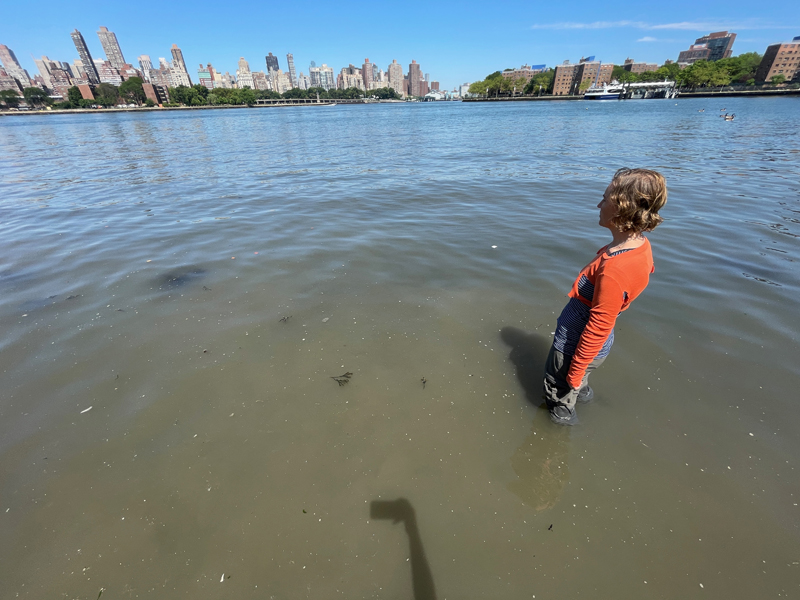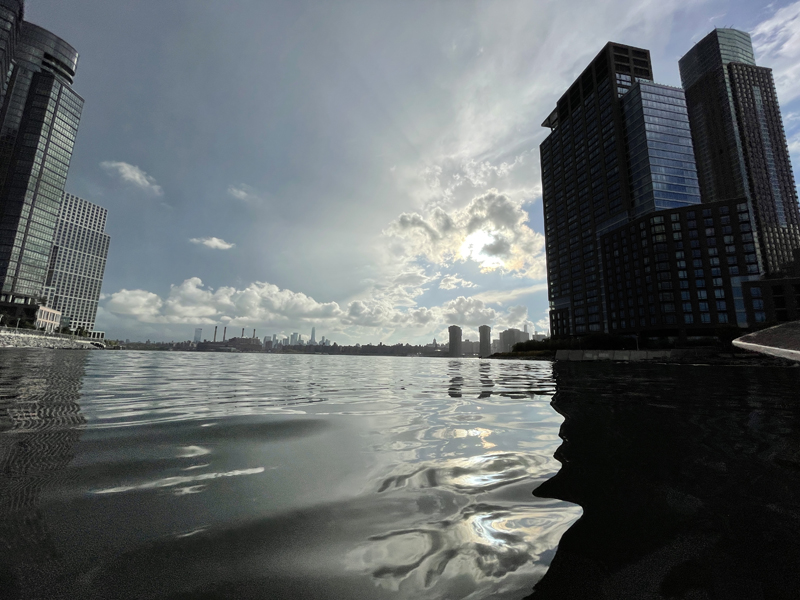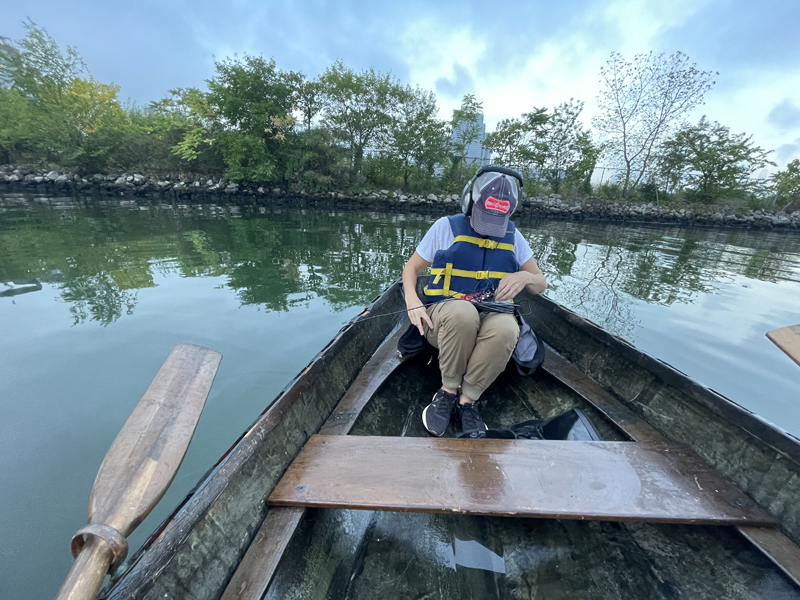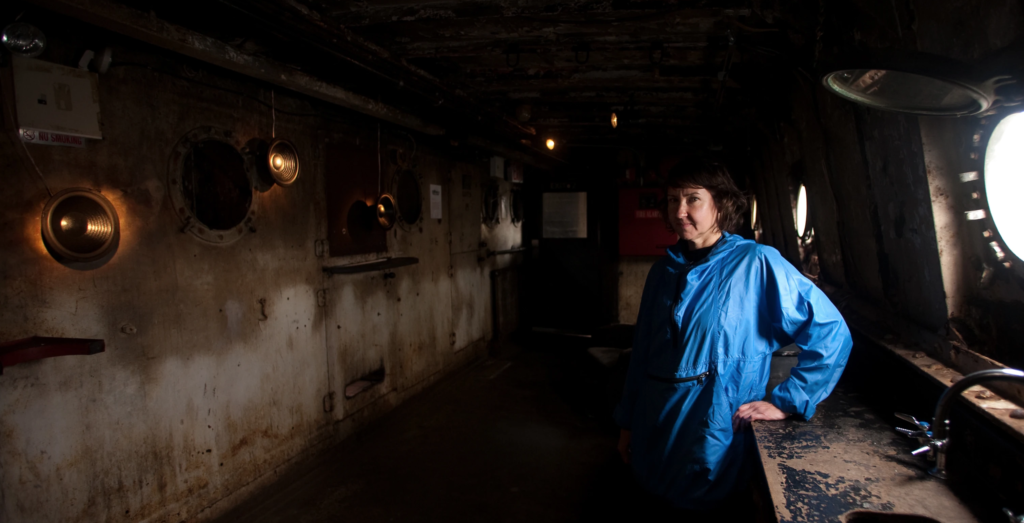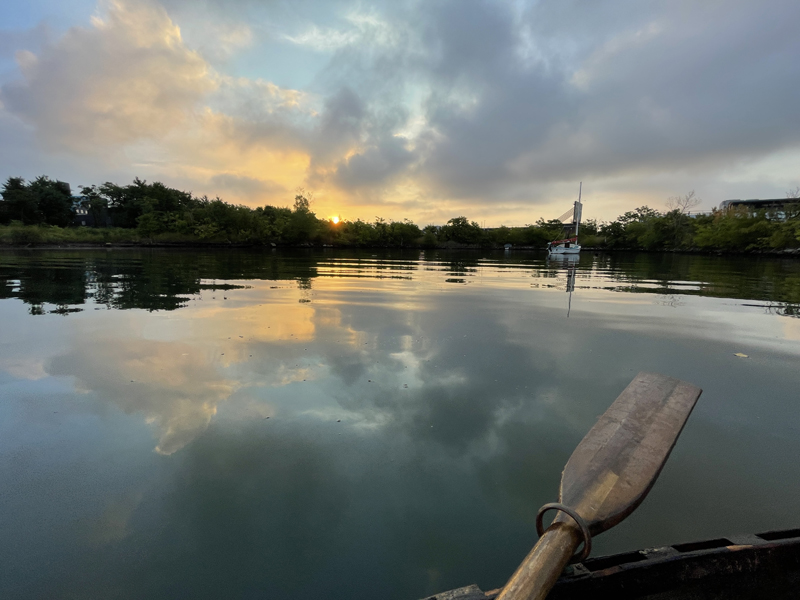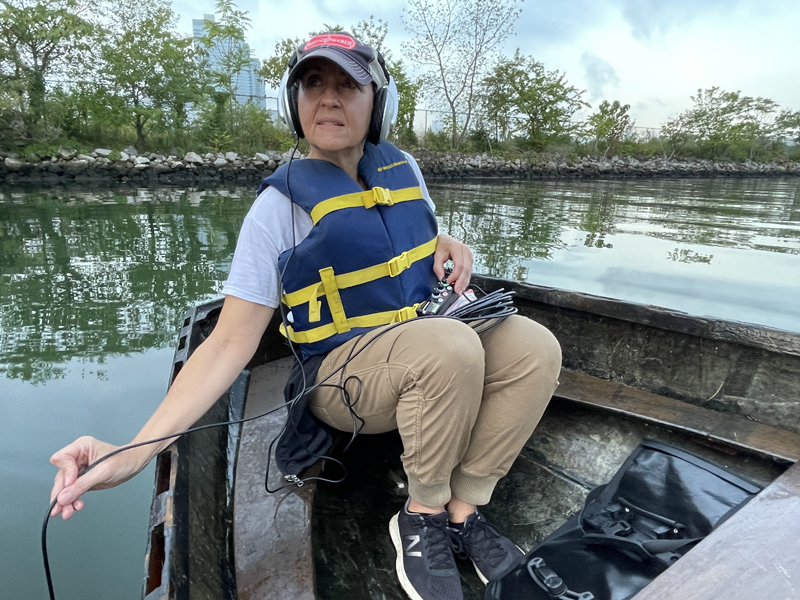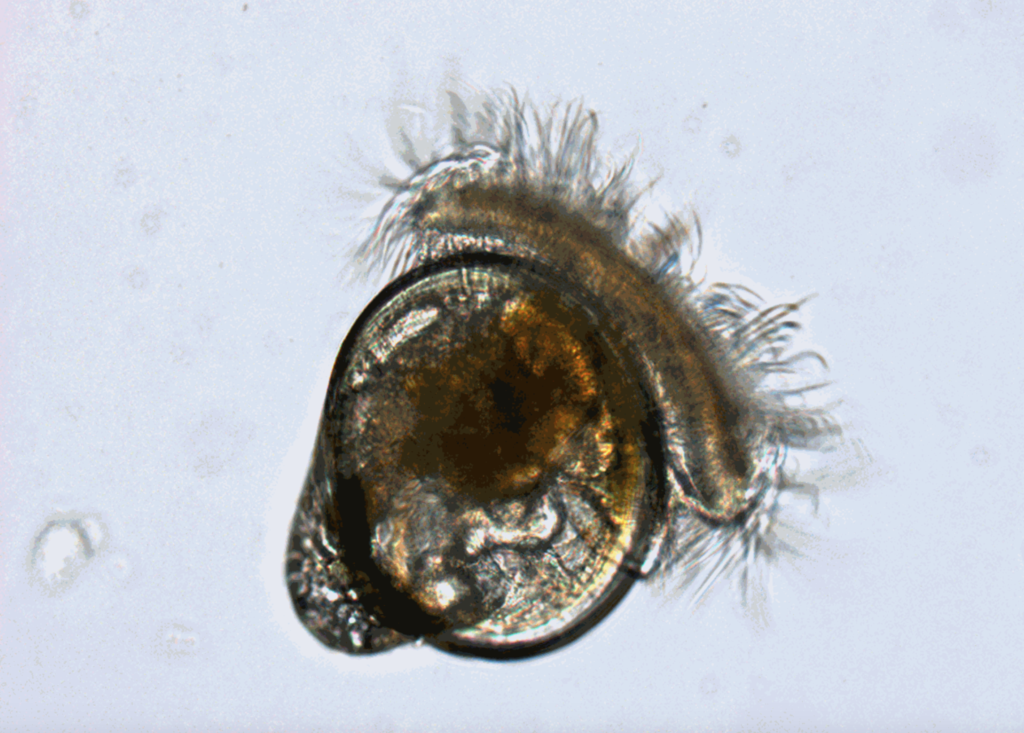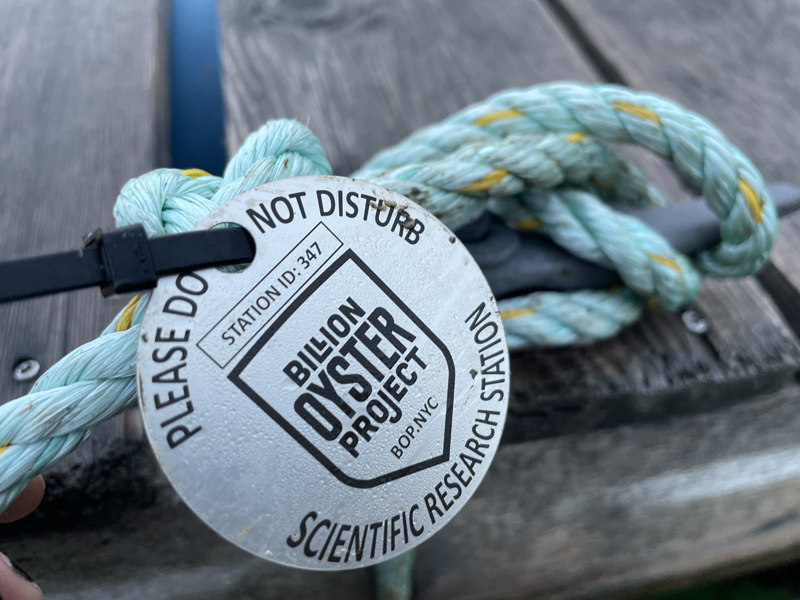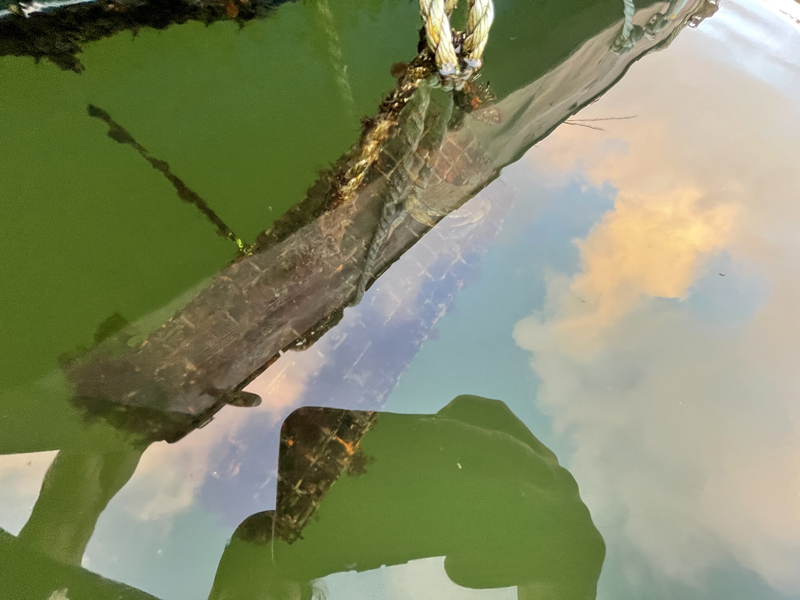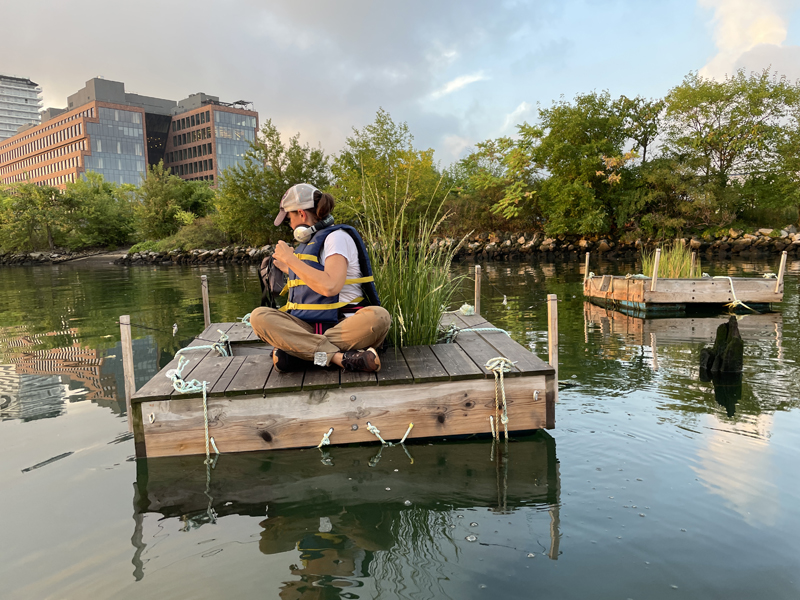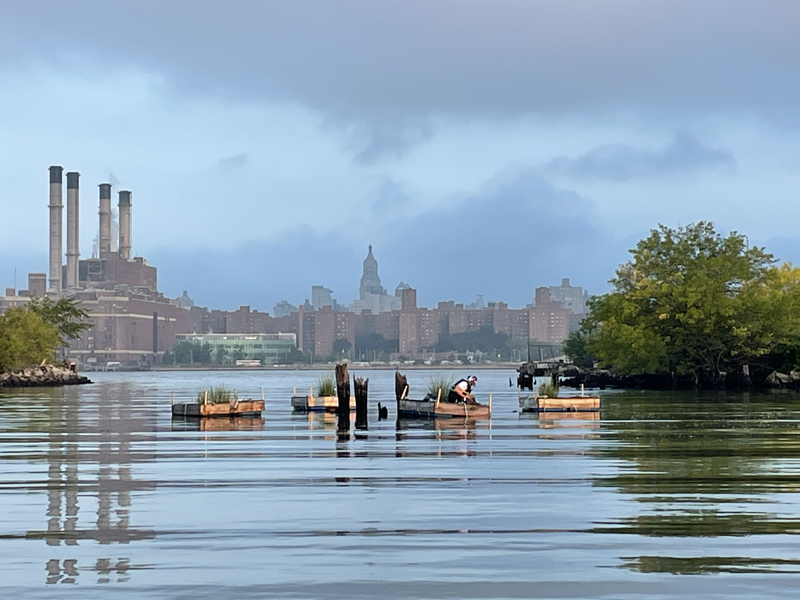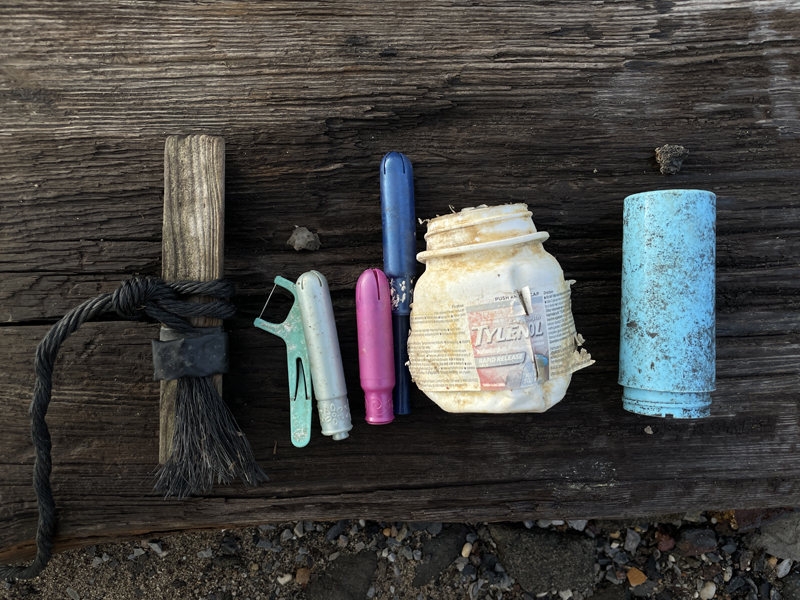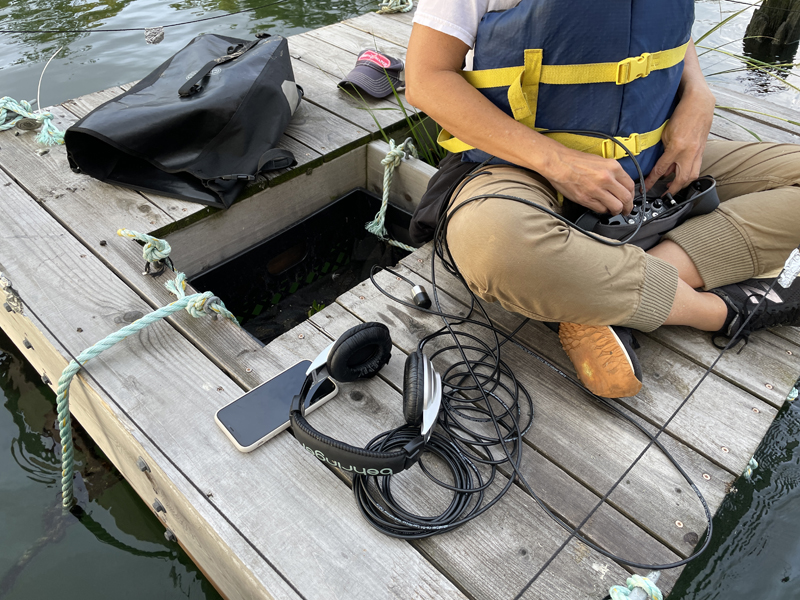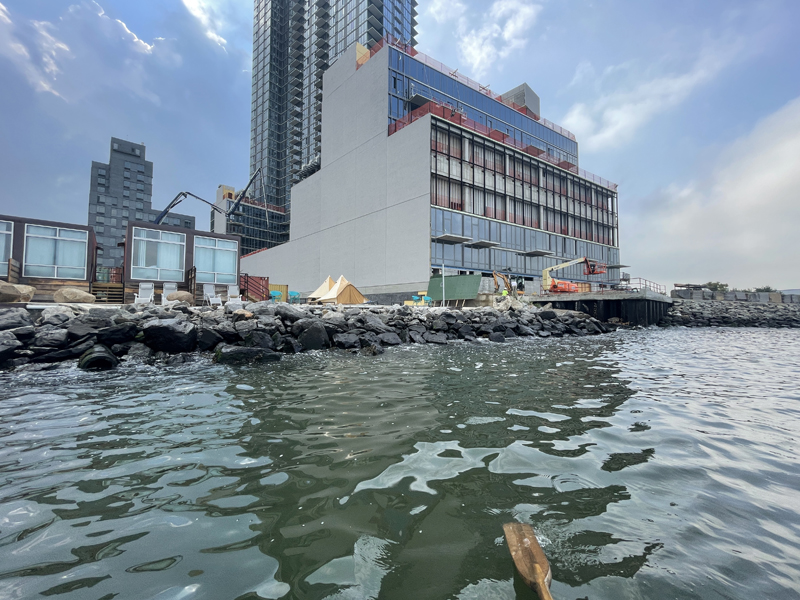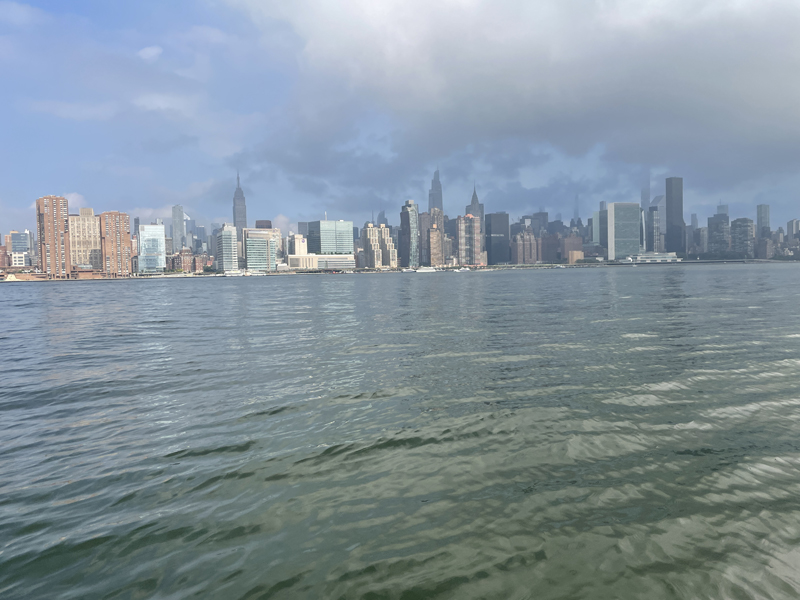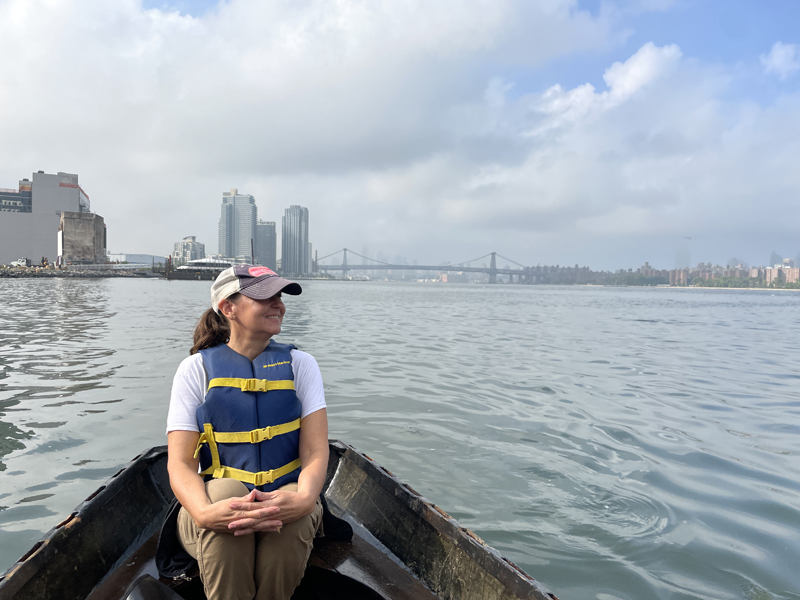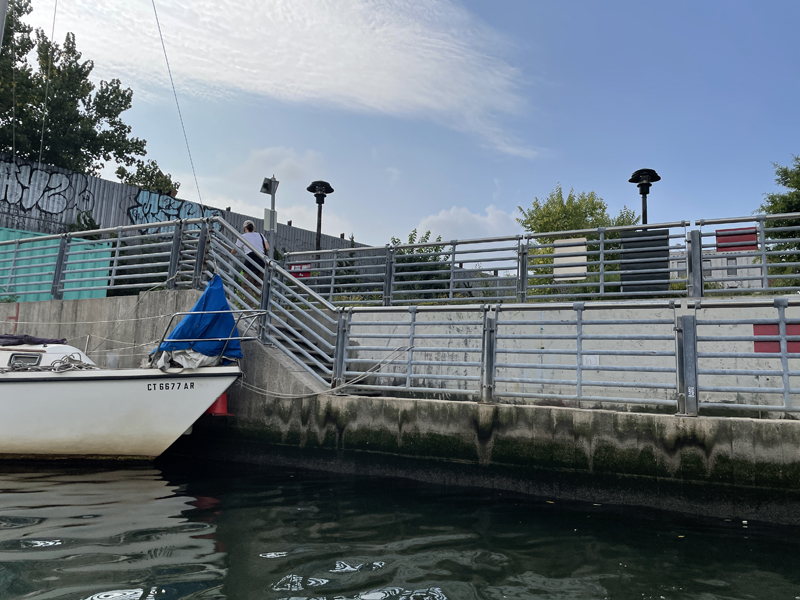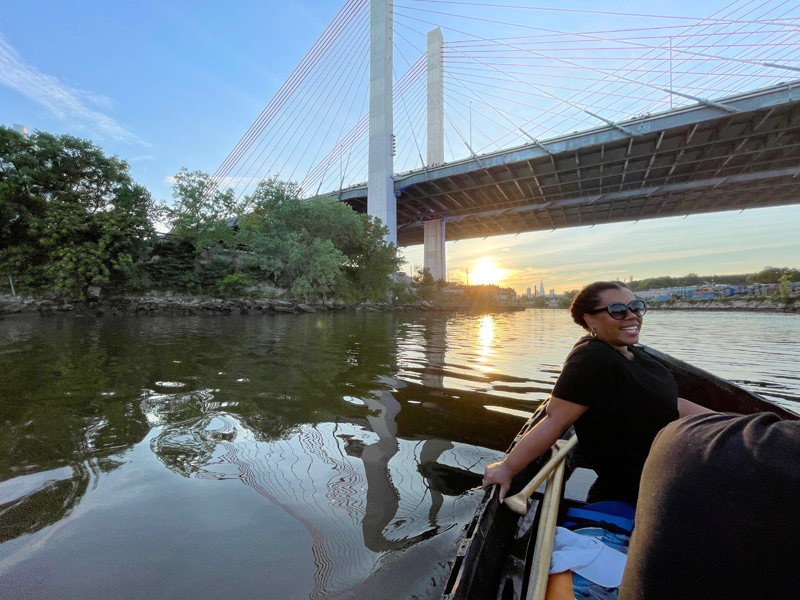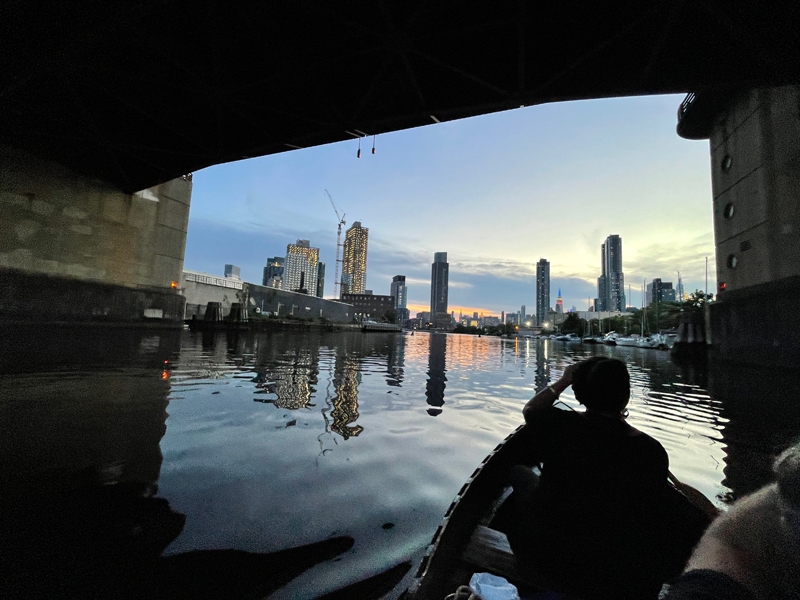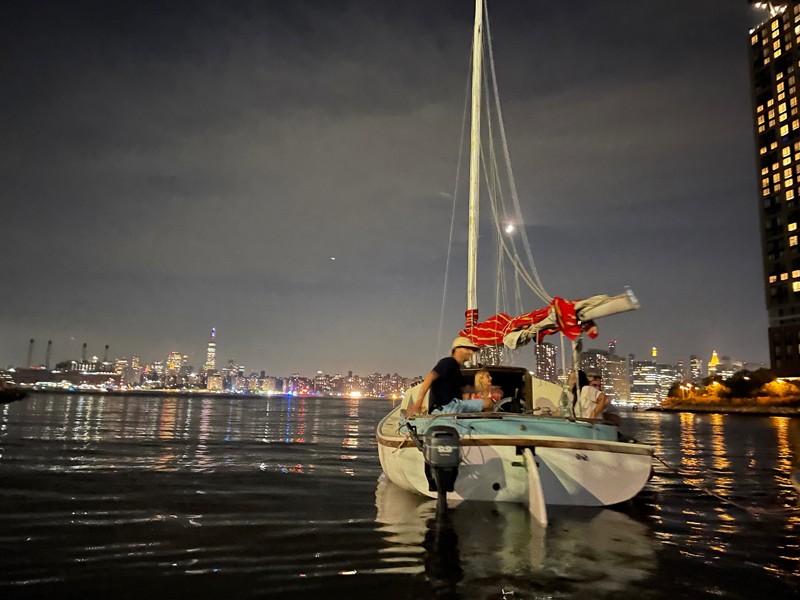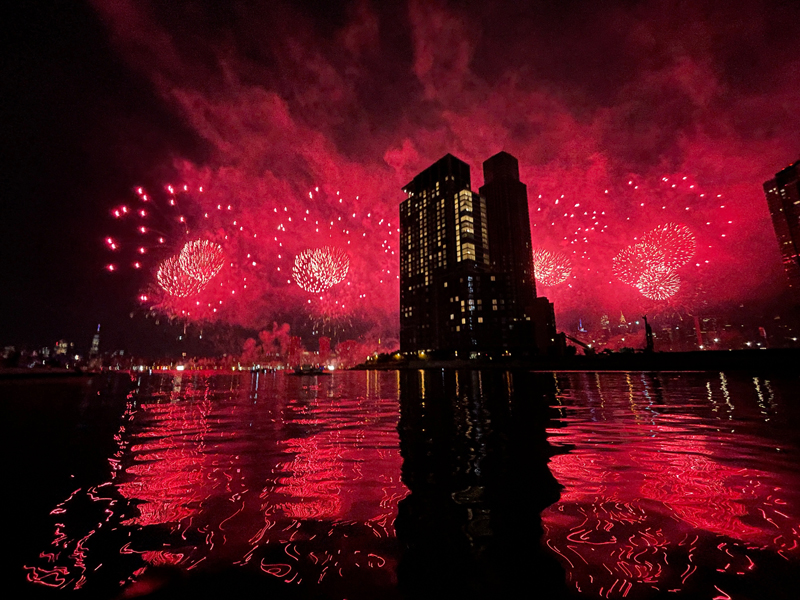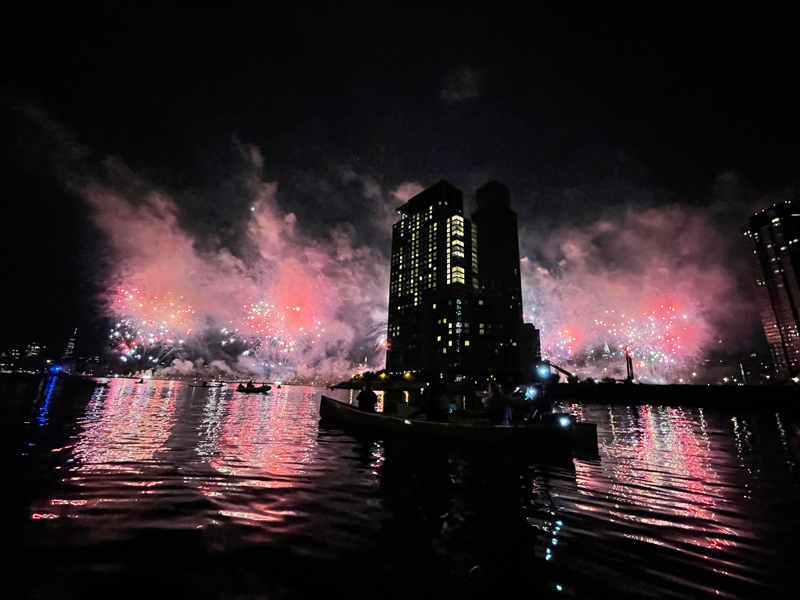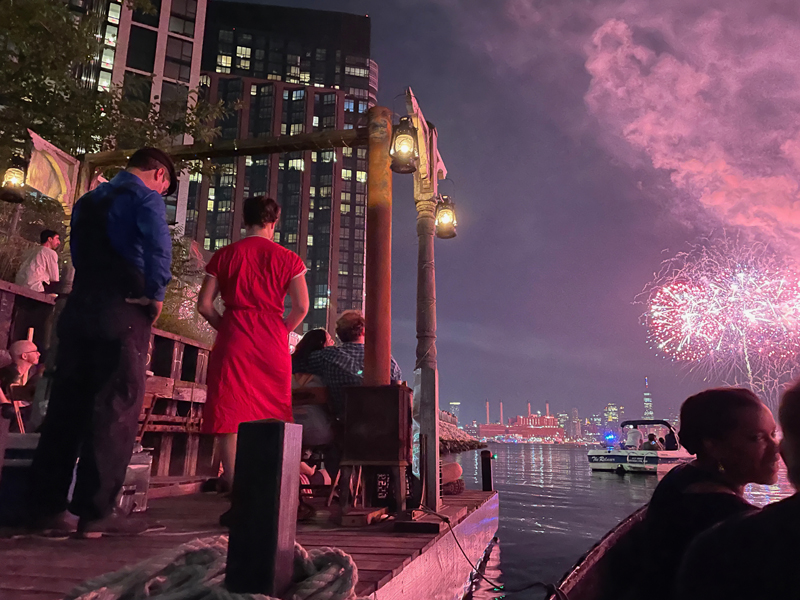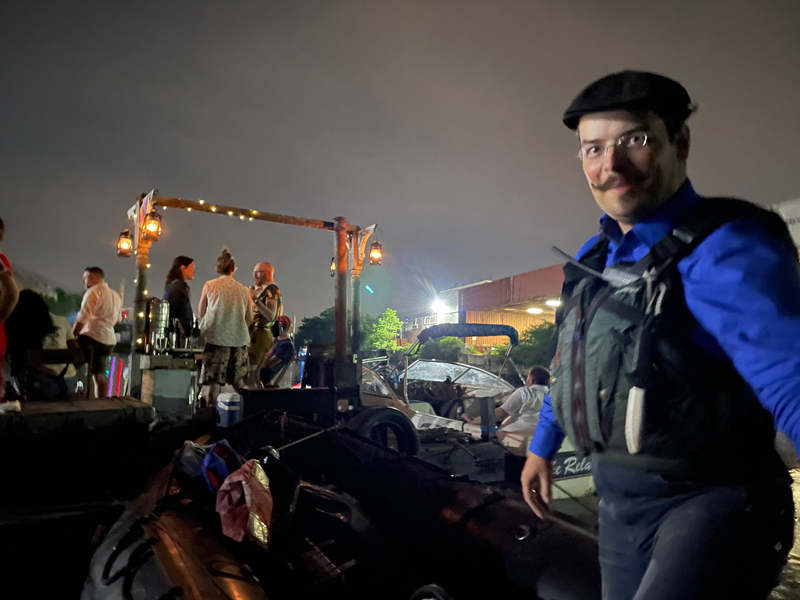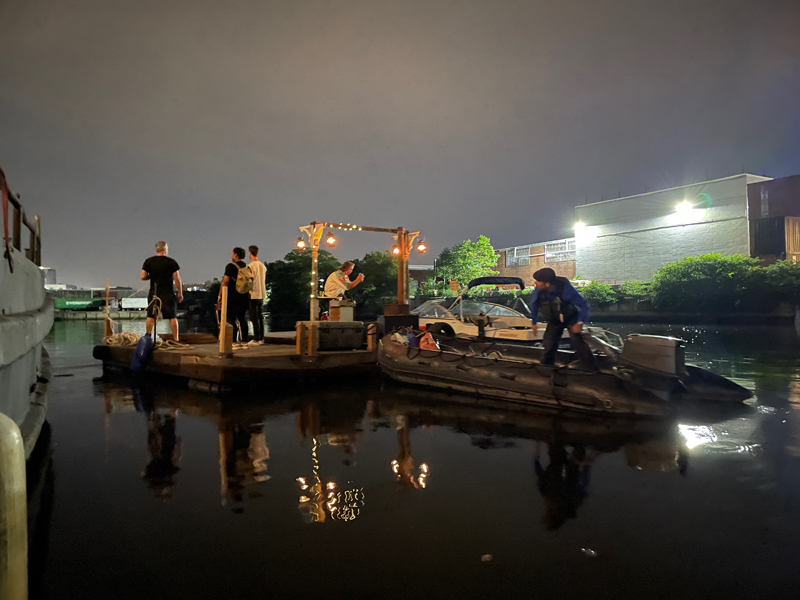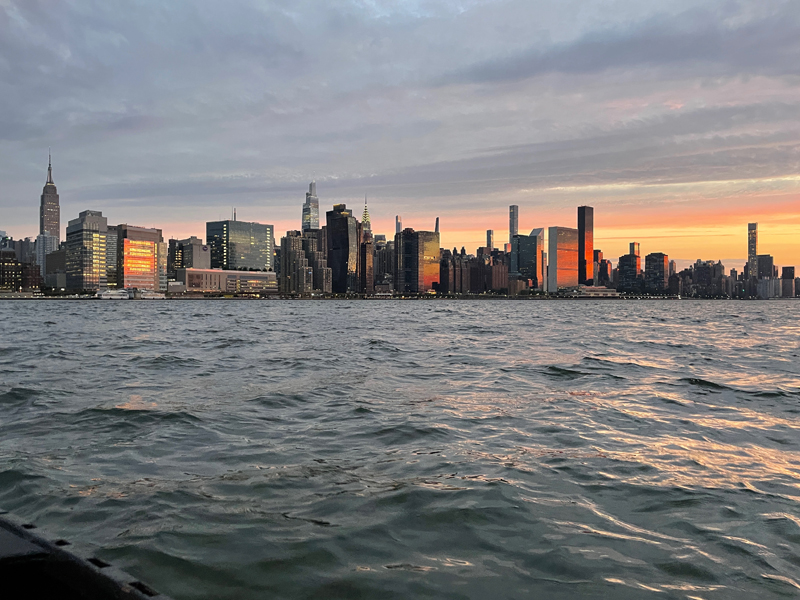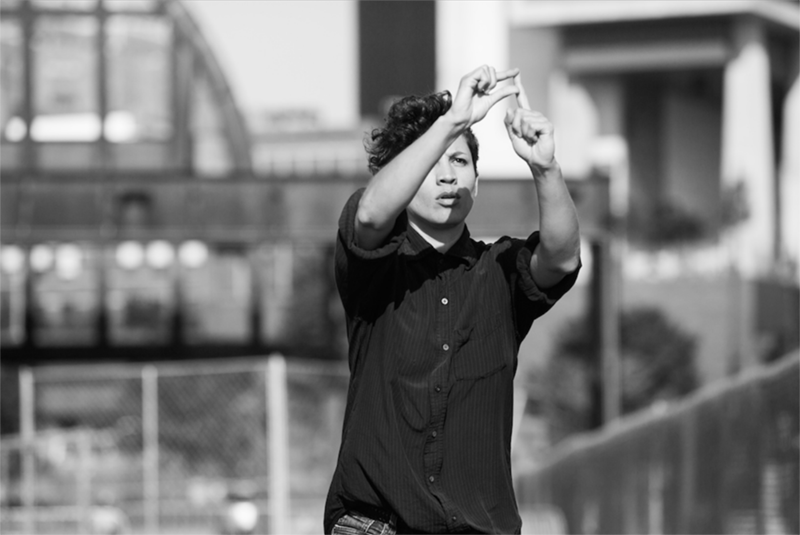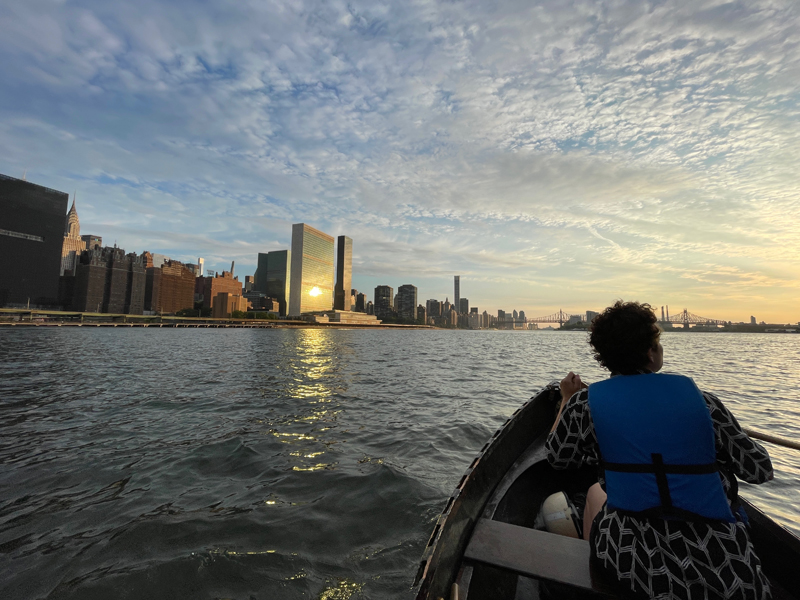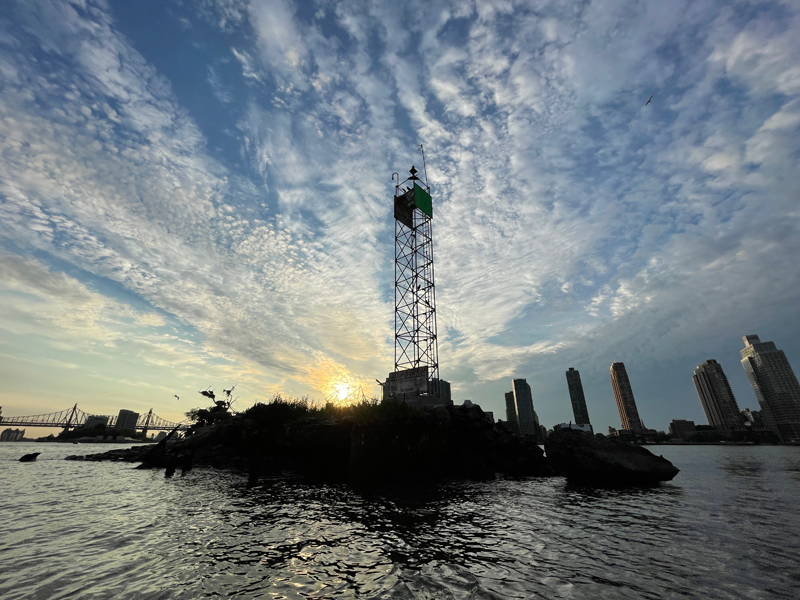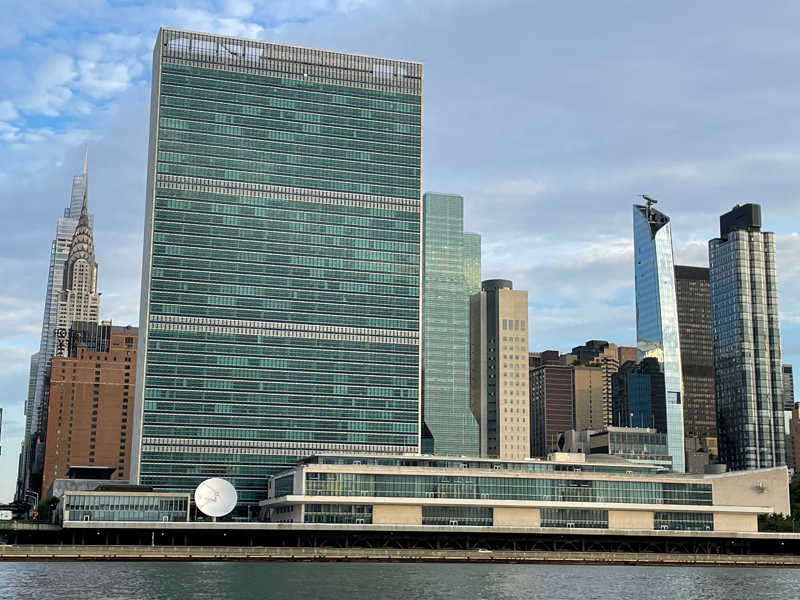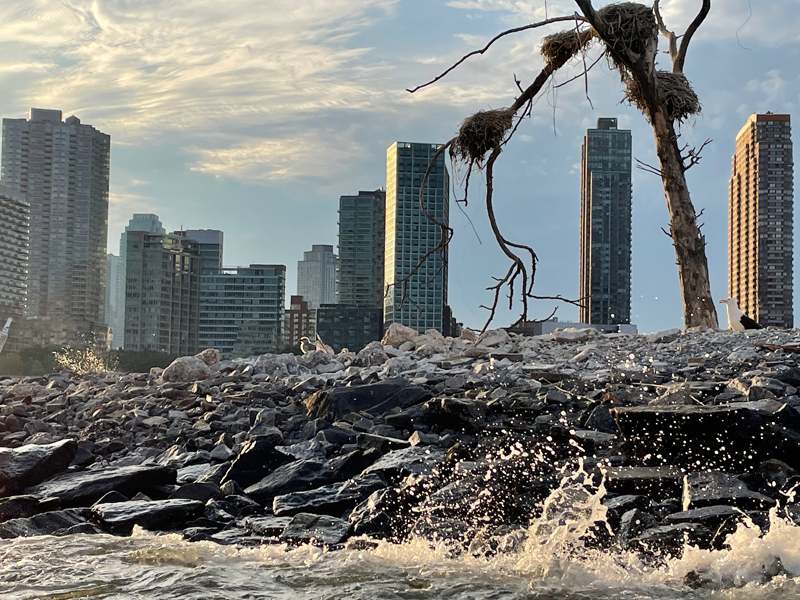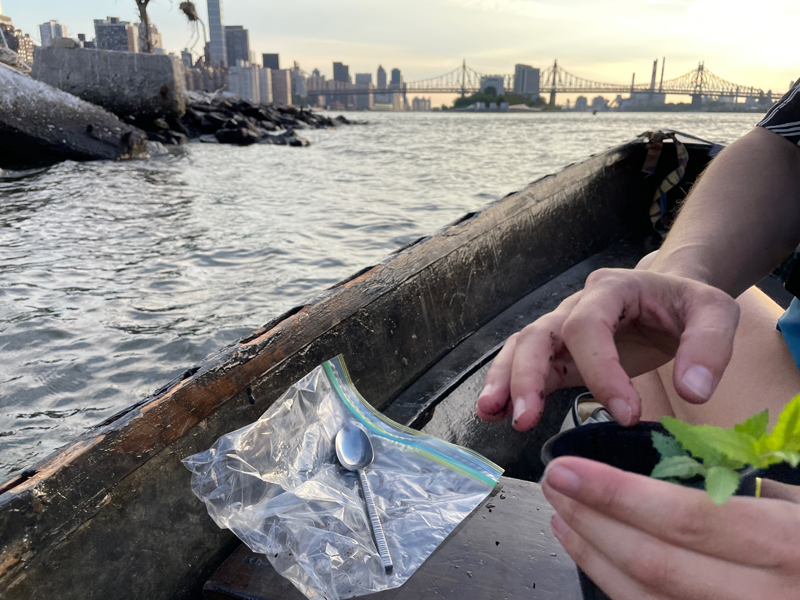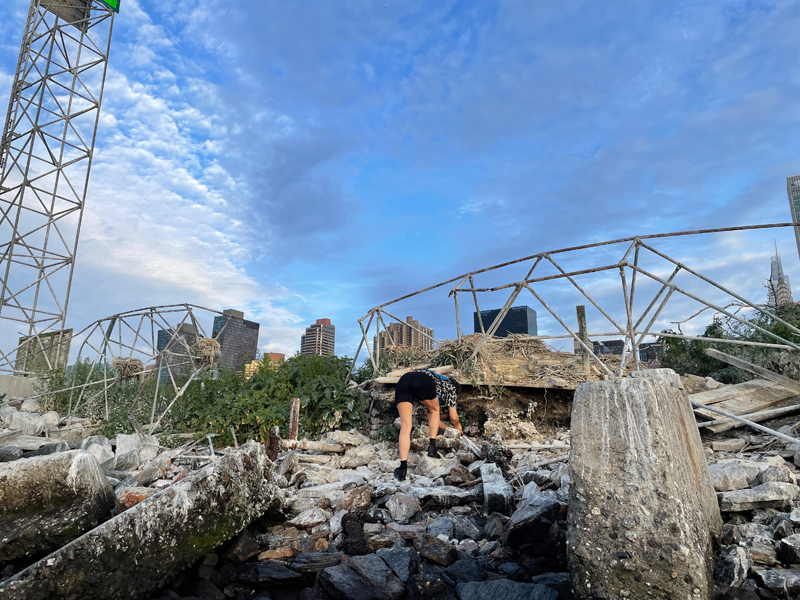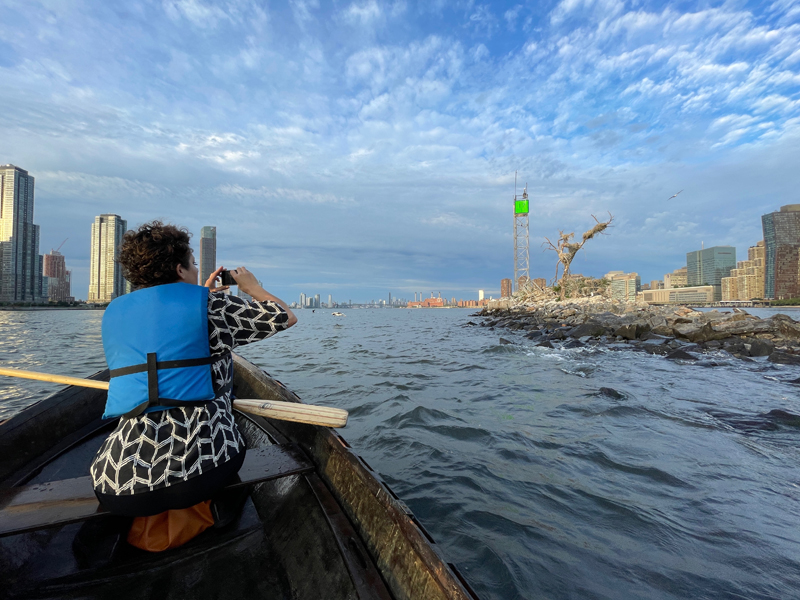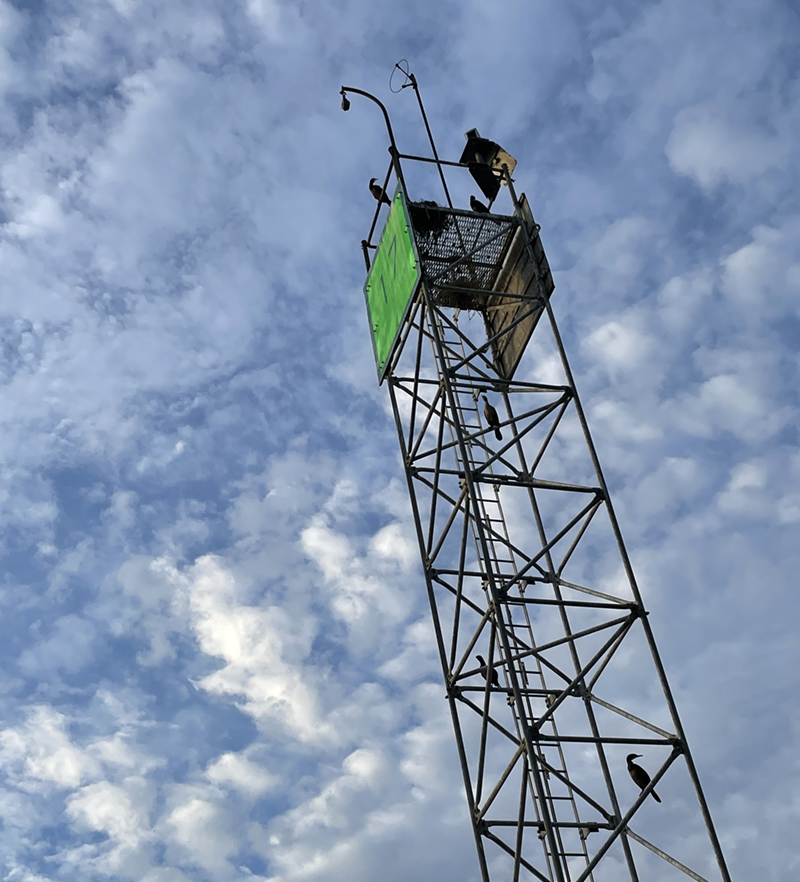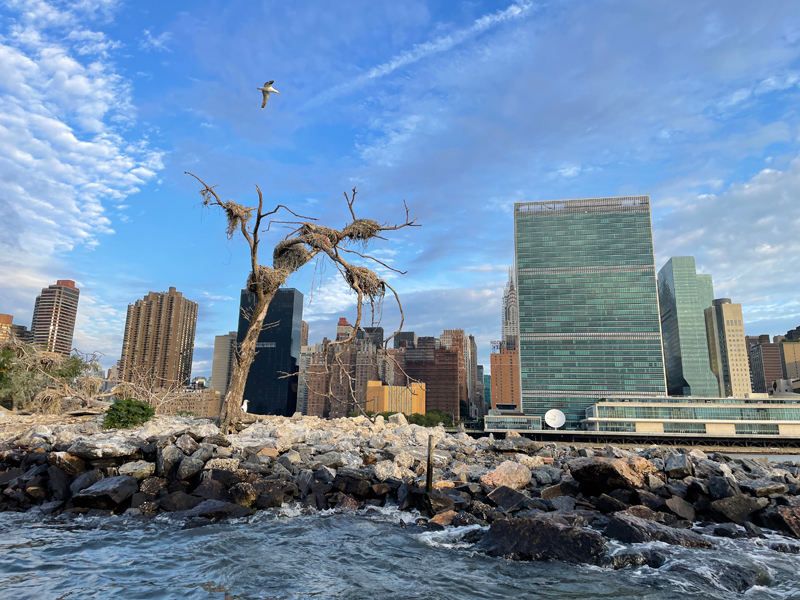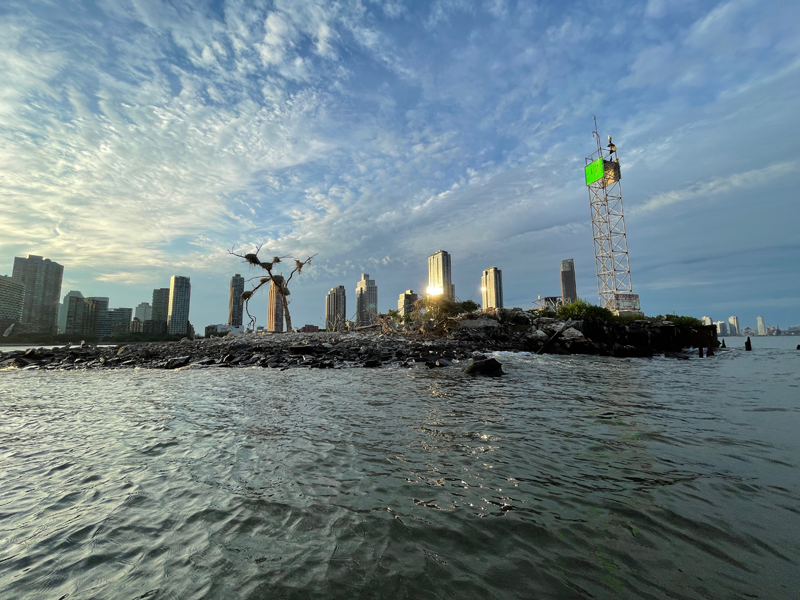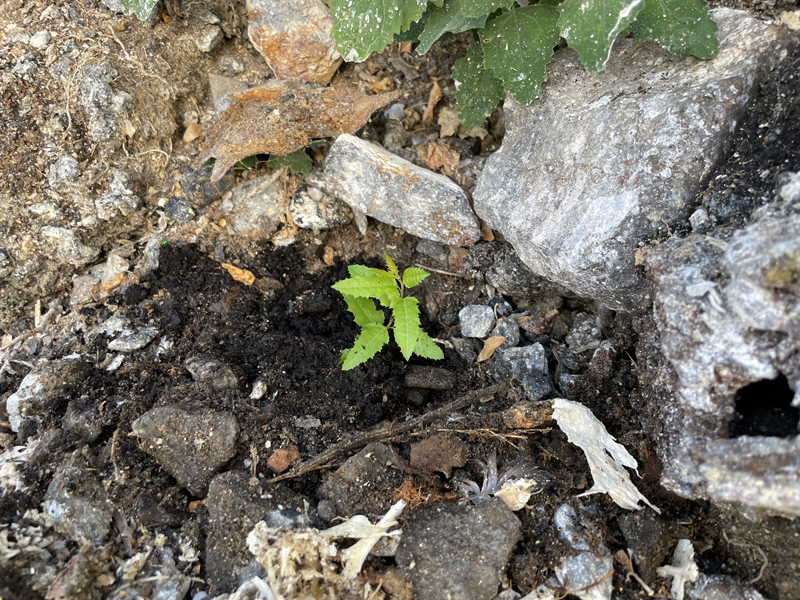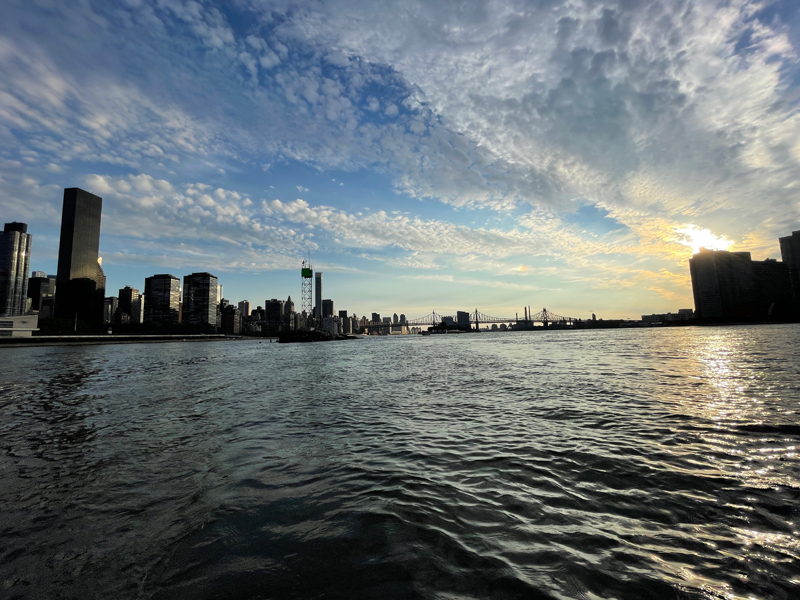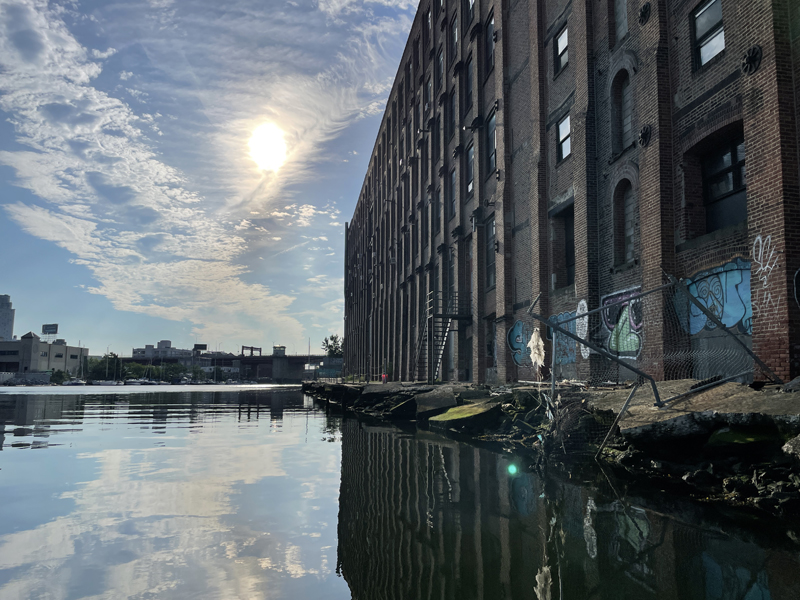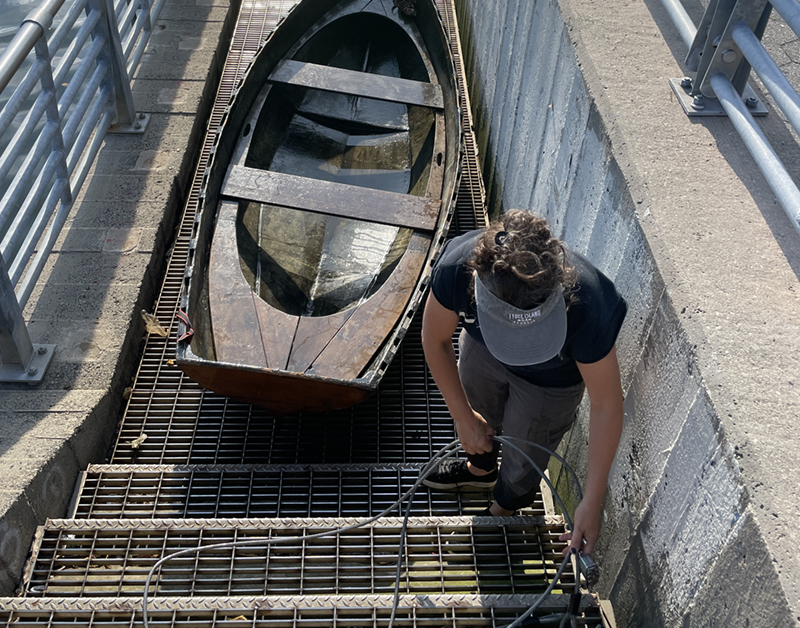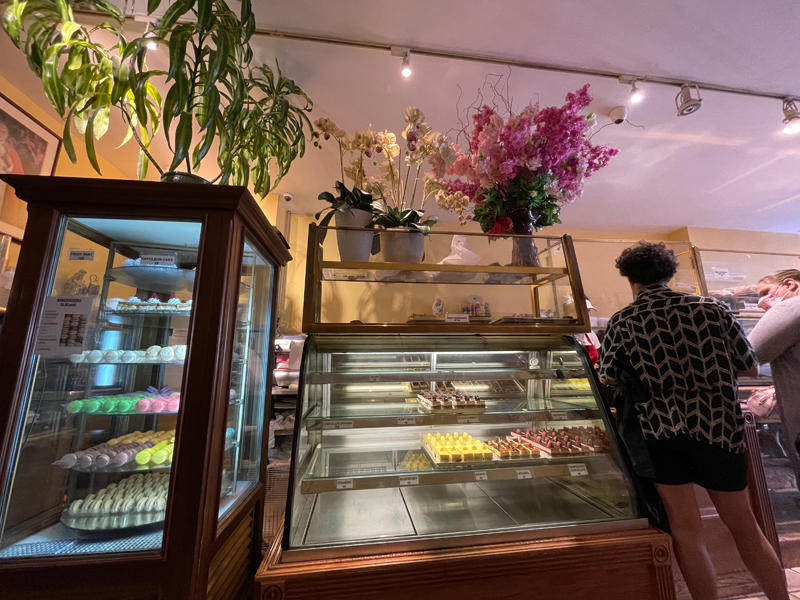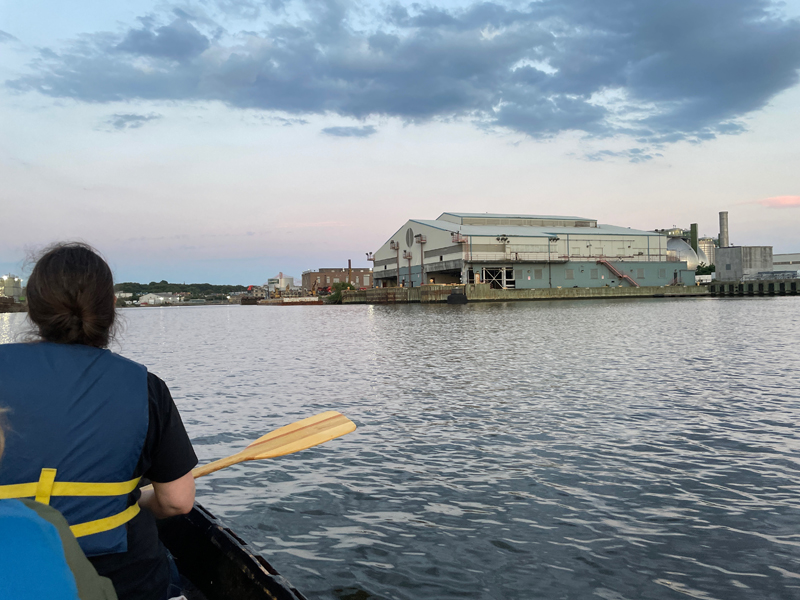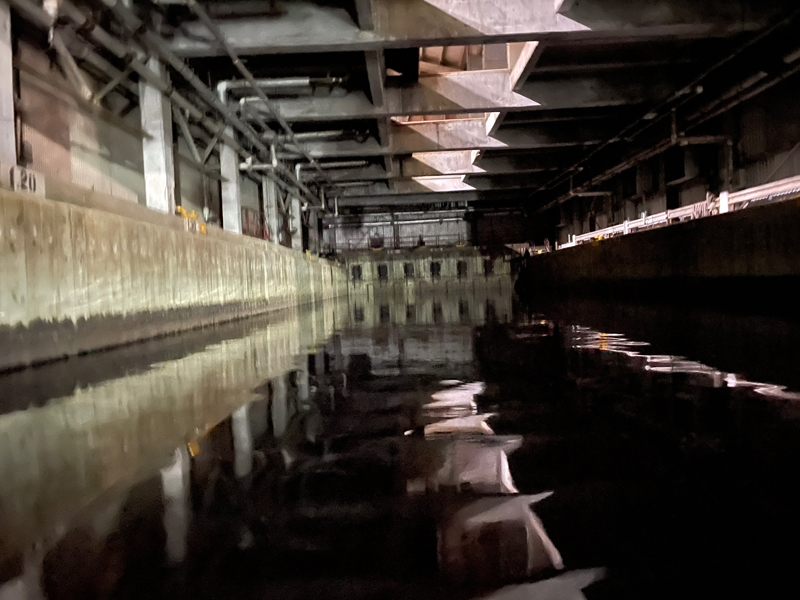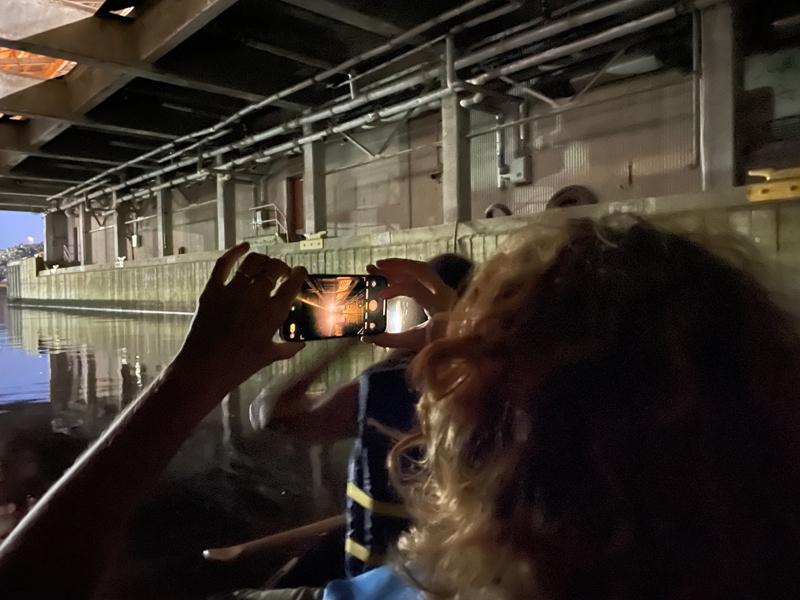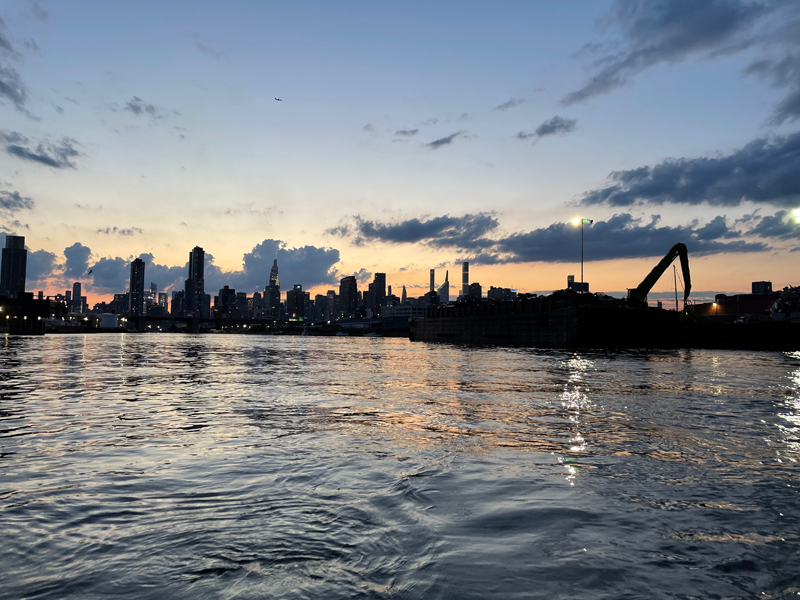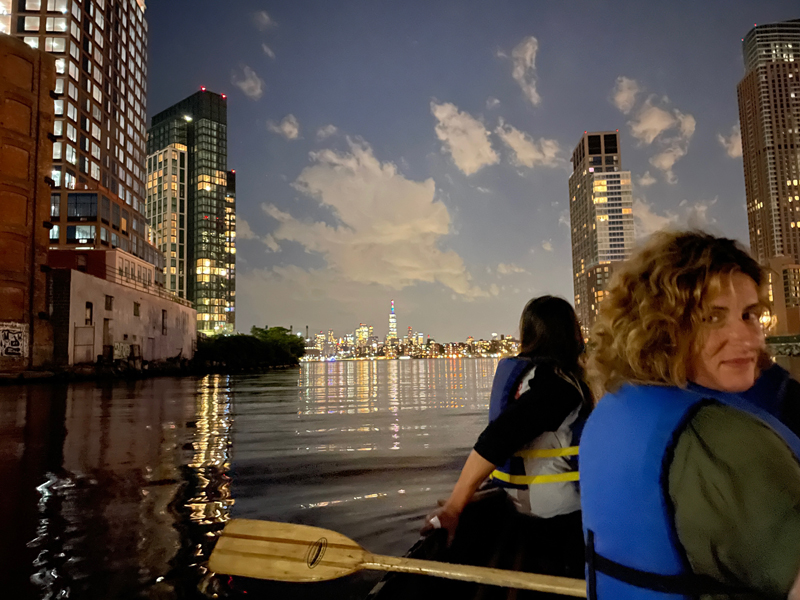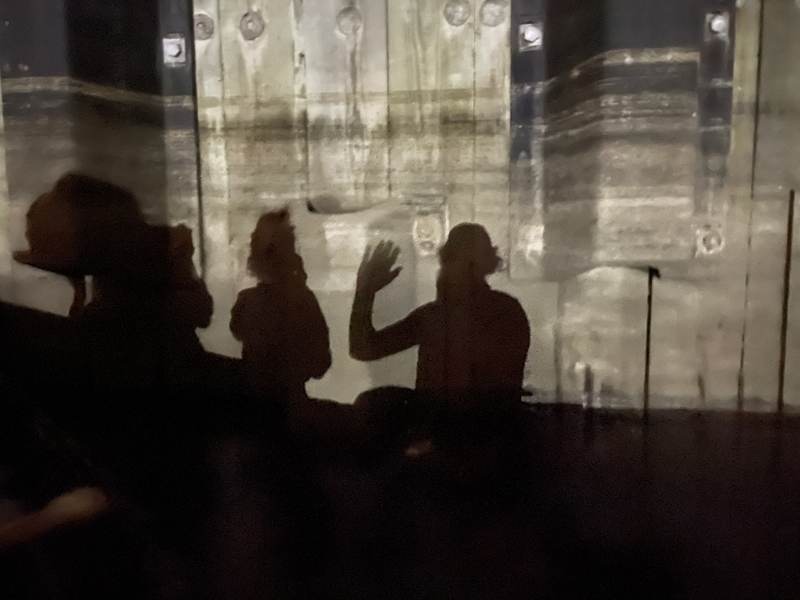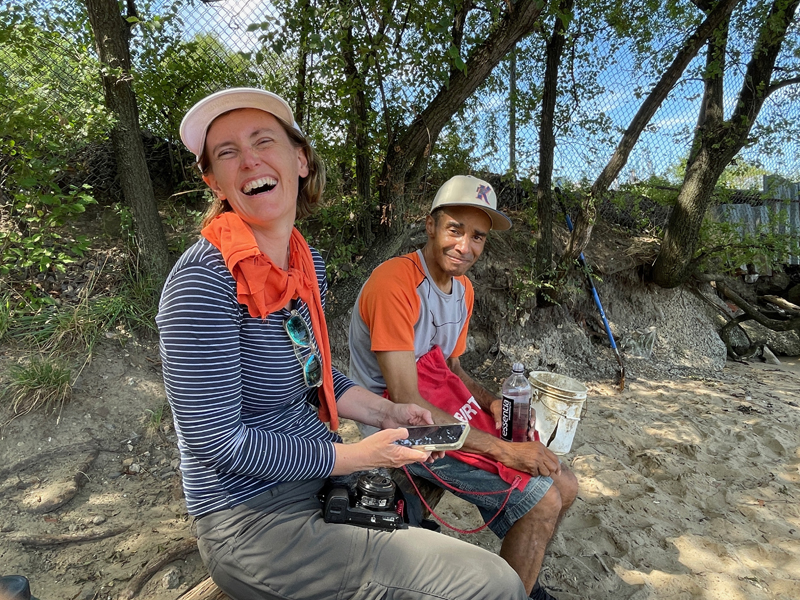
Last month, I met Sarah Cameron Sunde and her friend Fuse at Hallet’s Cove in Queens for a special trip of the Tide and Current Taxi, a historic reenactment.
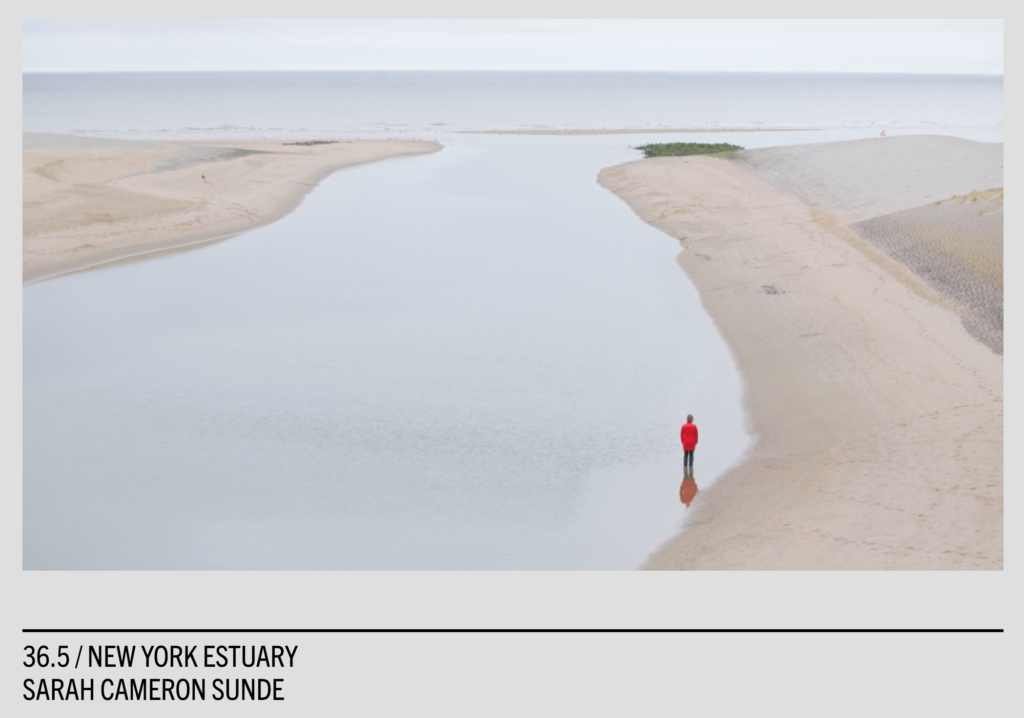
Sarah will perform a durational artwork this week about climate change and our relationship with the rising sea, a work that she has performed in nine cities around the world.
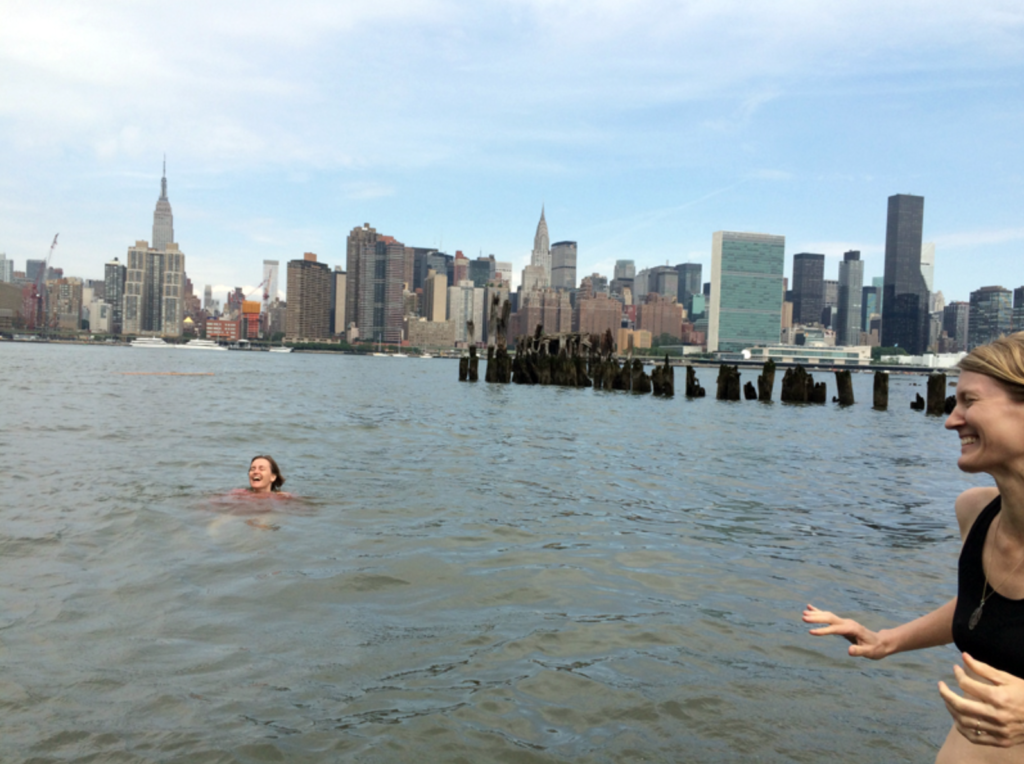
We went on almost this same trip back in 2105 when she was scouting locations for the performance.
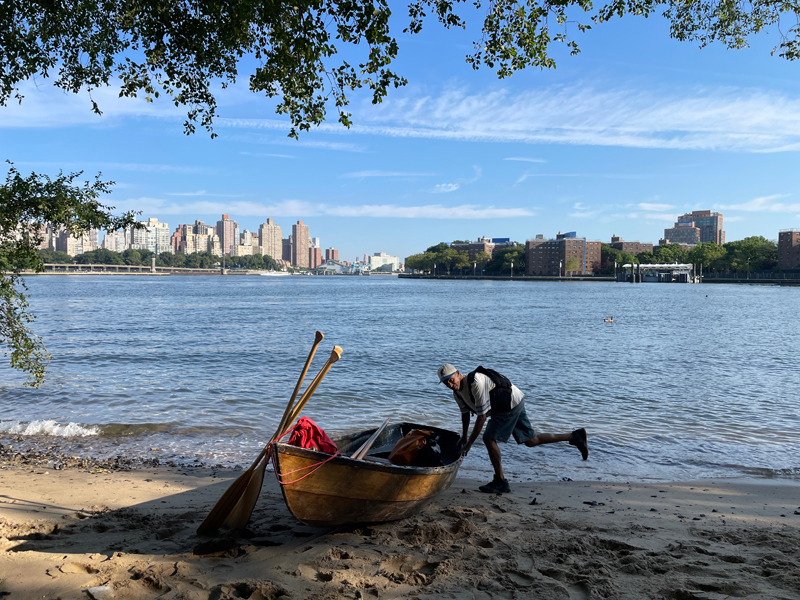
Fuse has been a supporter of the project ever since she started going to the cove.
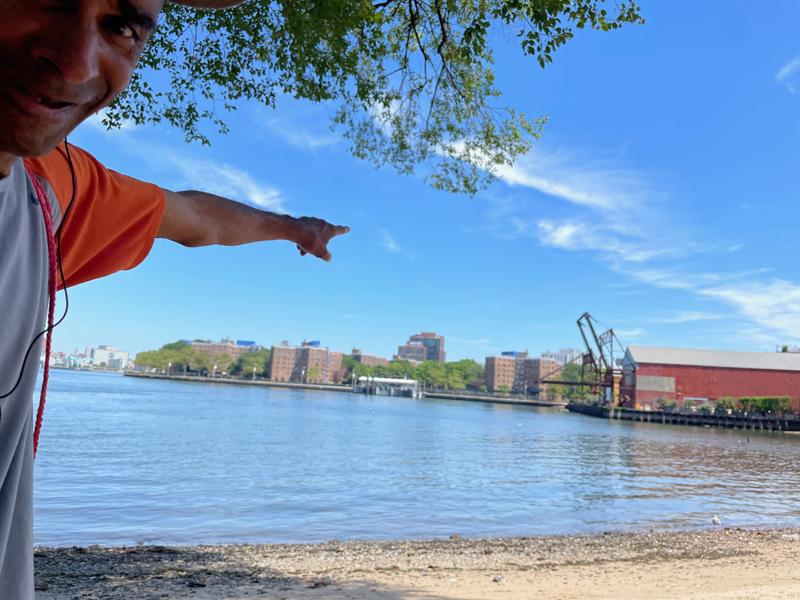
He lives nearby and often navigates the cove in his own boat,
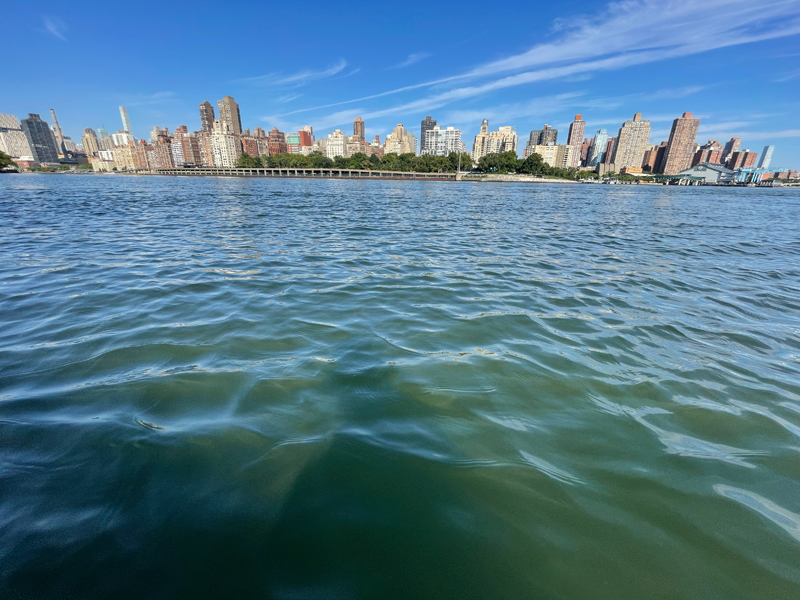
but today he agreed to travel with us to check out the river around the cove,
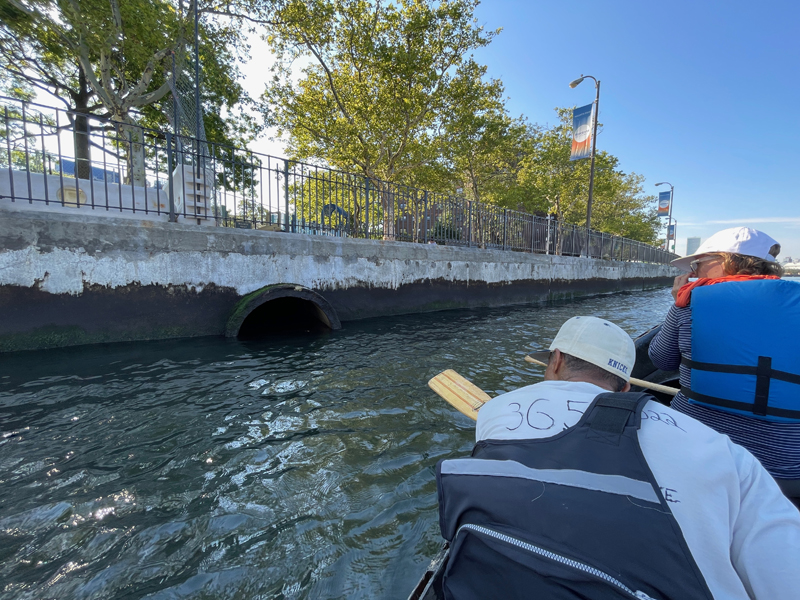
and see some new places along the shore.
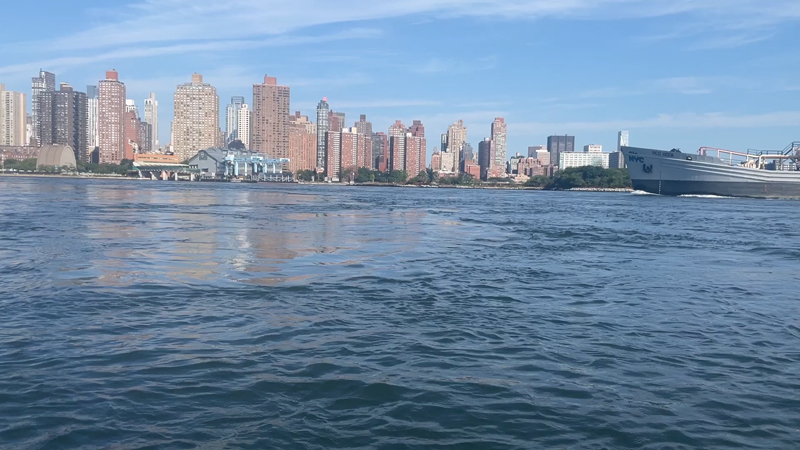
We edged into Hell’s Gate where the water was deceptively calm. We could feel the changing tide.
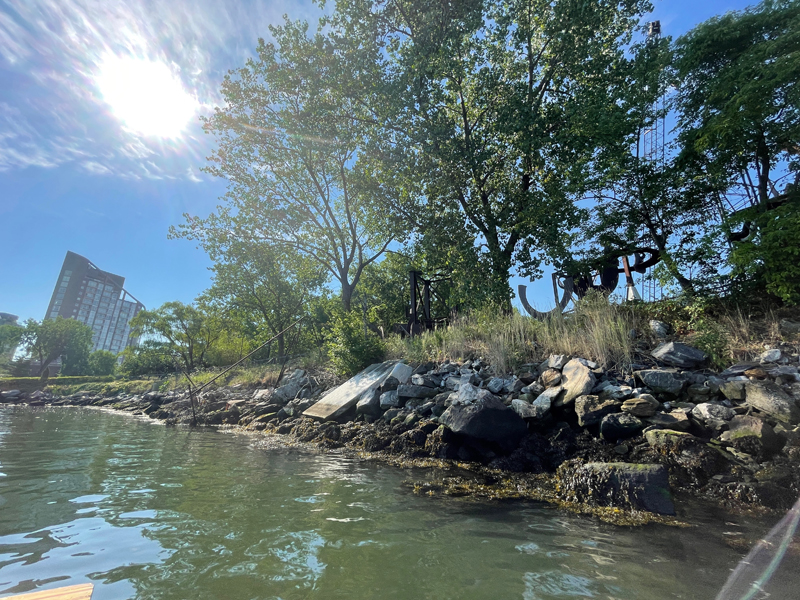
We passed by Socrates Sculpture Park and saw the Mark di Suvero sculptures on the bank.
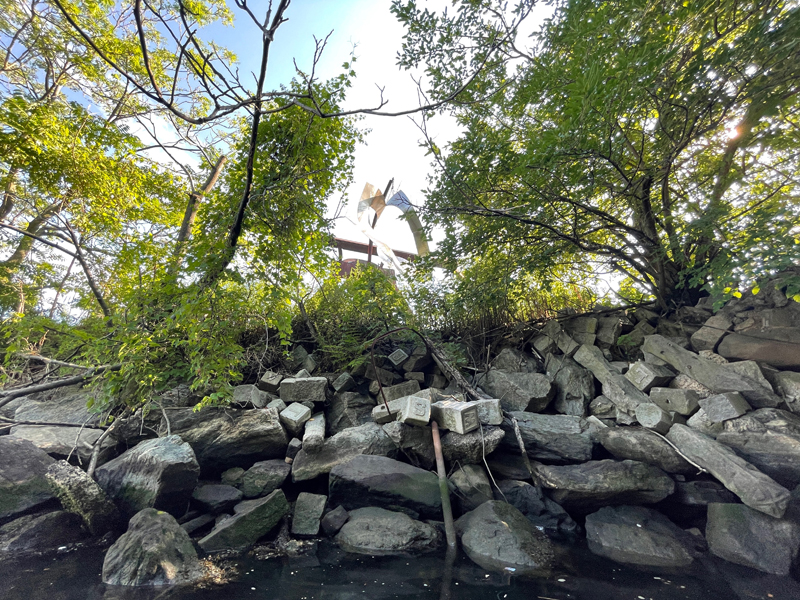
In fact, the entire bank itself seemed to be sculpted or made of sculptures.
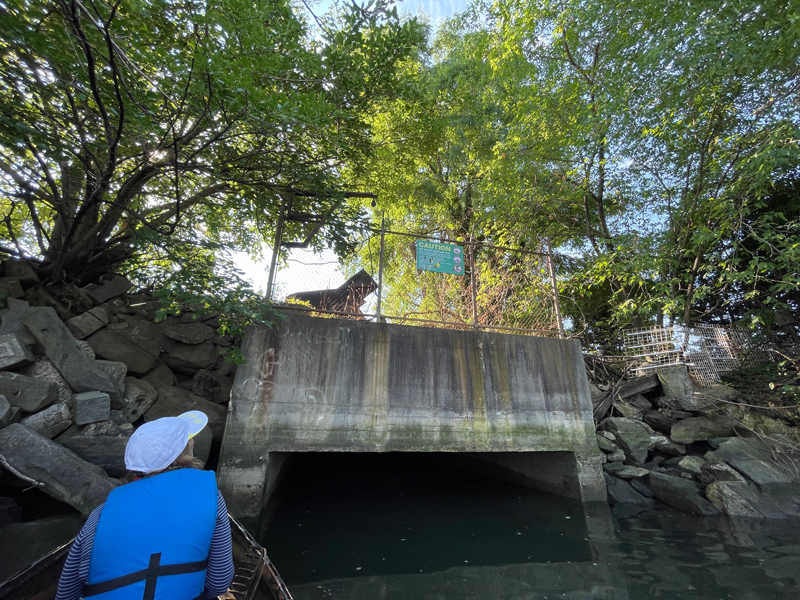
We came into a pretty cove with a sewer tunnel at the end.
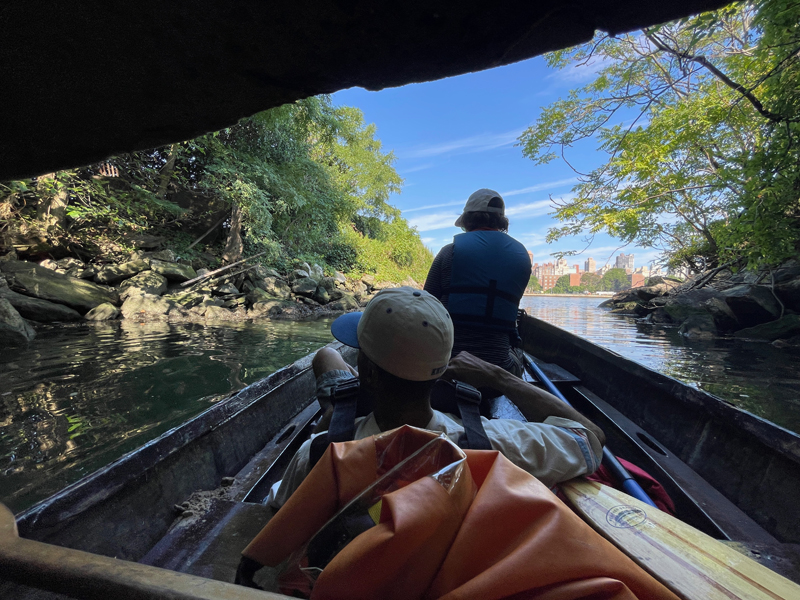
I thought of the trip as mostly a chance to interact with Sarah’s project, so it wouldn’t necessarily relate to the theme of ‘sound’ that I had set out for this summer, but then we hear something down at the end of the tunnel.
At first, we thought someone was talking to us from the other end of the tunnel but we realized it was our own voices, a clear and profound echo, coming from the back of the tunnel.
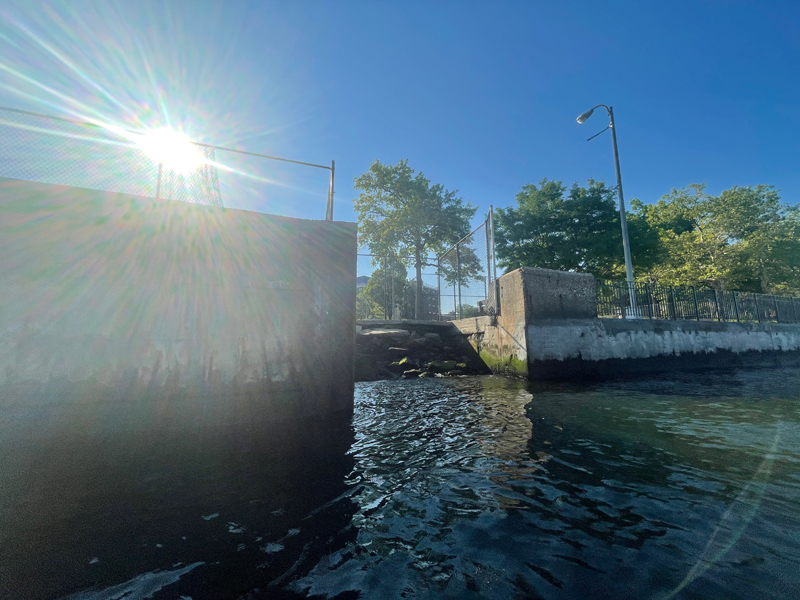
My favorite thing about going into tunnels is coming out after on a bright sunny day.
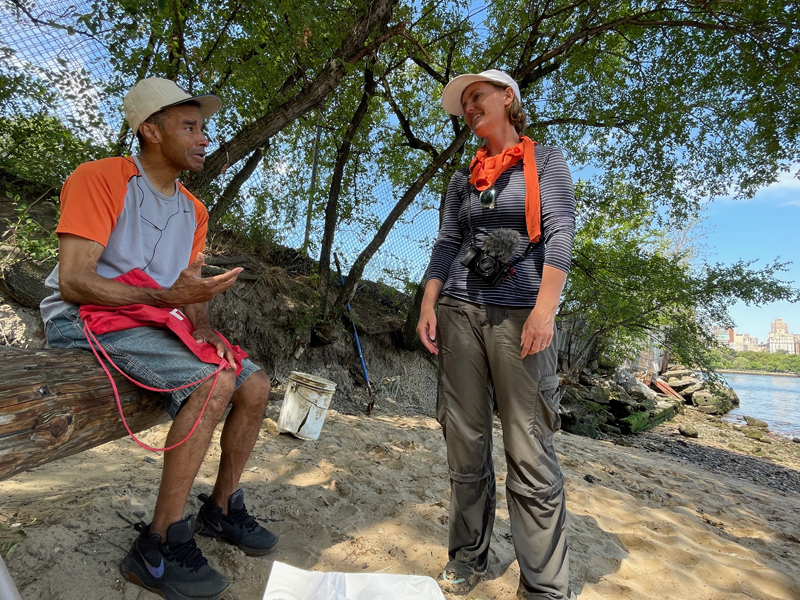
Back at the beach, we talked about Sarah’s performance.
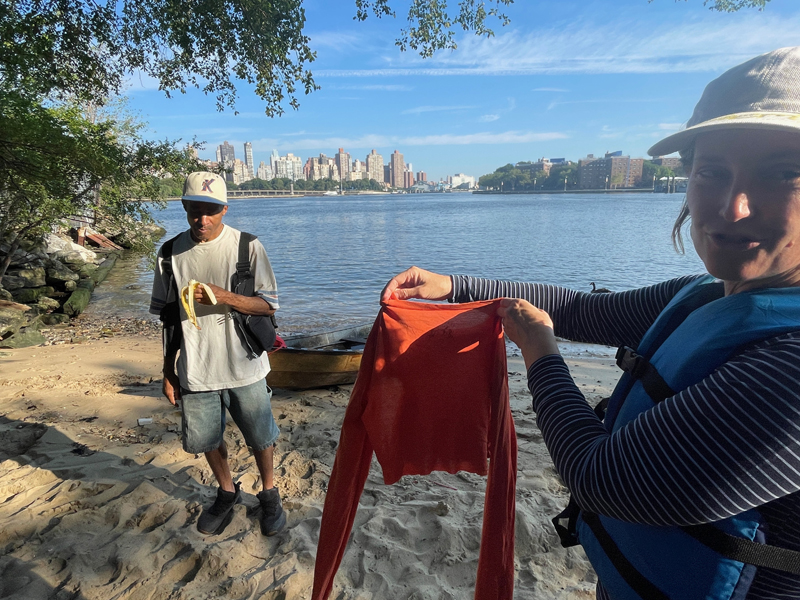
Sarah brought out the same shirt that she has worn for the project since the very first day when we found this spot.
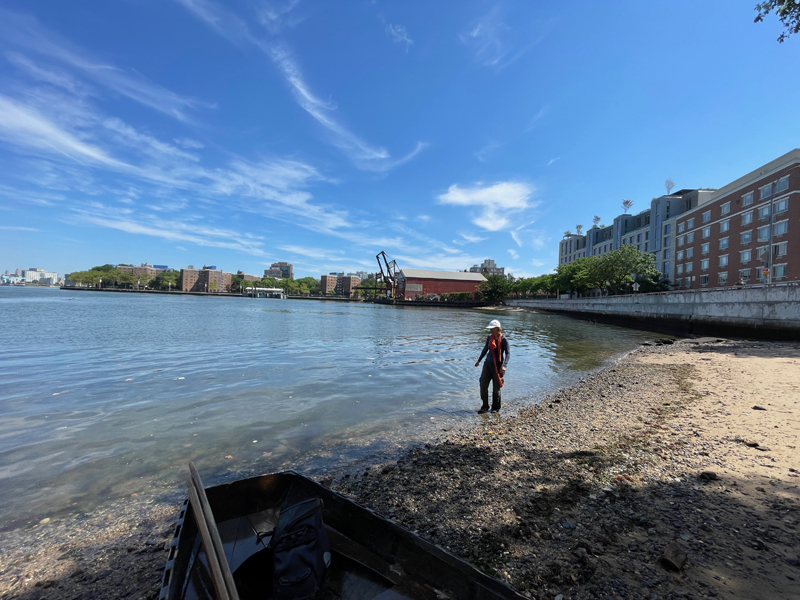
Now she has been around the world with it and back to New York for the piece that will take place today at Hallet’s Cove.
